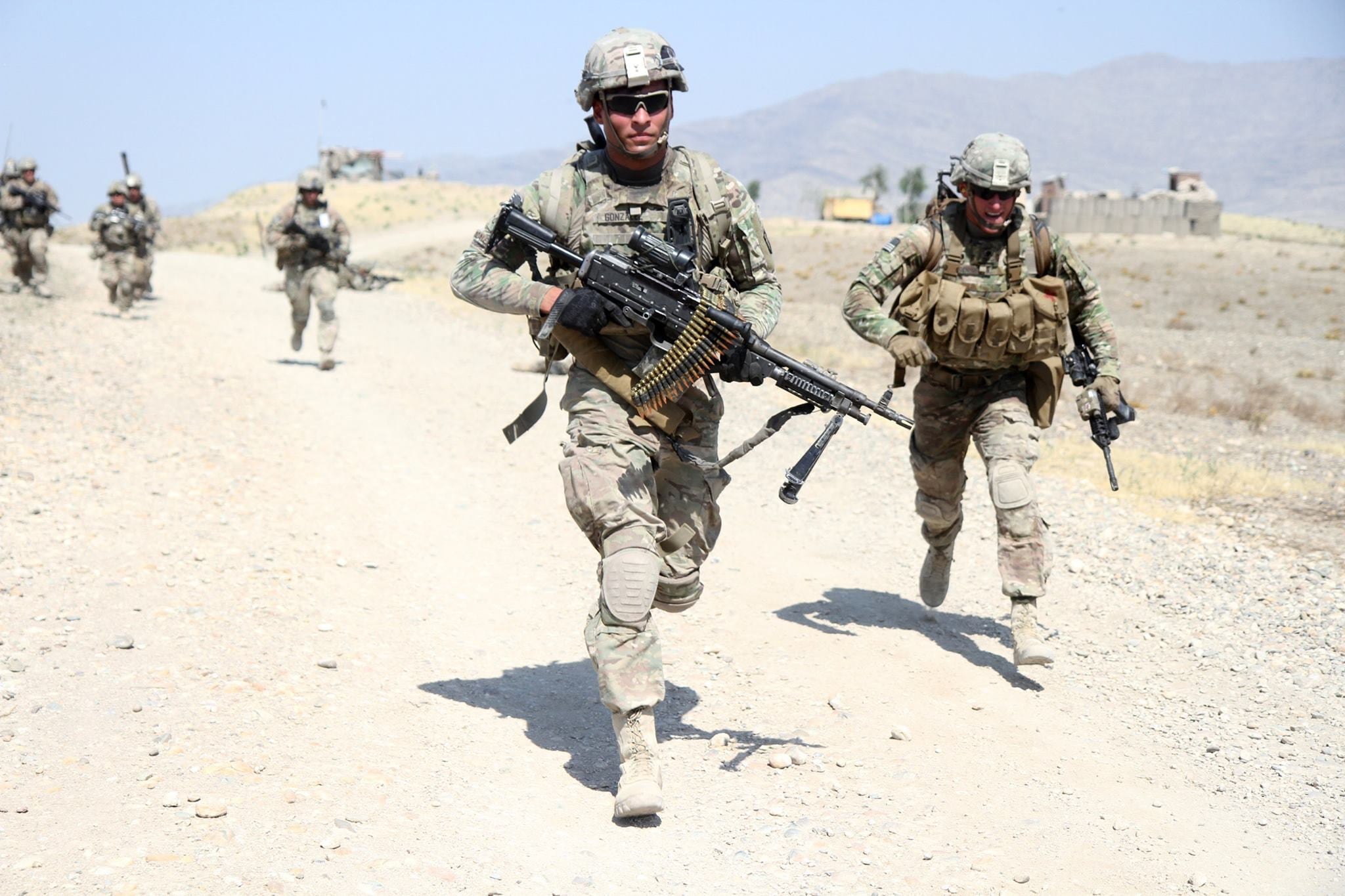Over the past year, there’s been more movement on a replacement for the service rifle the Army has used for the past half century than there has been in at least a decade.
And early signs show potential for massive changes.
Reports emerged last year of an umbrella program called the Next Generation Squad Weapon, which aims to transform the small arms of the infantry squad in just a few short years after decades of incremental modifications to a firearm developed in the 1950s.
The first offering of the NGSW program has seen rapid advancement by typical government standards following industry days last year at both Fort Benning, Georgia, and Picatinny Arsenal, New Jersey, led to postings for prototypes and the selection of five companies to provide six samples in the next year.
That first weapon is the Next Generation Squad Automatic Rifle, a replacement for the M249 Squad Automatic Weapon that fires 5.56mm, the same round as the M4 carbine and M16 service rifle variants.
The weapon the Army is working on is a “significant technological advance over anything that exists today,” said Army Chief of Staff Gen. Mark Milley.
“This is a weapon that could defeat any body armor, any planned body armor that we know of in the future,” he said. “This is a weapon that can go out at ranges that are unknown today. There is a target acquisition system built into this thing that is unlike anything that exists today. This is a very sophisticated weapon."
It’s also resilient, Milley said.
“It will stand all the rigors of weather, terrain, and soldier use, and all of that kind of stuff,” he said. "This is a pretty impressive gun.”
For more coverage from the AUSA annual meeting, click here.
While Milley declined to discuss specifics, he did say he expects Army testers will be able to shoot demonstration models with live munitions that meet the Army’s basic specifications and requirements as early as next summer.
Initially both the NGSAR and any future carbine variant will be prioritized to about 100,000 troops serving in close combat units, mostly infantry and special operations forces. The Army will keep a substantial number of M4s in the arsenal for the rest of the troops as the program fields the new weapons and matures.
“It’s the infantry, still today, that suffers 70 to 80 percent of the casualties [on the battlefield],” Milley said. “I want those kids to have the best, bar none, with nothing held back. We owe it to them, in my opinion. Shame on us if we don’t provide it to them.”
RELATED

The NGSAR will be an “intermediate caliber, high-velocity, magazine-fed system,” according to government documents. It must weigh less than 12 pounds with ammunition that weighs 20 percent less than the traditional brass case ammo.
At a minimum, the Army also expects the weapon to fire 60 rounds per minute on three-round burst for 15 minutes, without cook off.
Long controversial, the 5.56mm round is finally being challenged as the standard round for the forces, as the NGSAR program postings have asked industry to look at testing 6.8mm caliber ammo.
Whatever emerges next year from the prototypes, that product is only expected to inform what’s possible given the requirements of what the Army is asking for in the new weapon.
Officials are planning for a three-year window to field, but if tech accelerates, that time frame could shorten.
Government information added to postings for the companies providing prototypes also included the 5.56mm and 7.62mm rounds, but in caseless ammunition configurations.
The weapon will include a suppressor capability and likely include data gleaned from newer ways to make gun barrels such as flow forming, a cold manufacturing method for metals that can reduce chips, seams and improve strength and durability on stressed metals.
The companies awarded prototype opportunities are the following:
- AAI Corporation Textron Systems
- FN America LLC
- General Dynamics
- PCP Tactical, LLC
- Sig Sauer Inc.
Textron warrants attention as they have a head start in caseless ammunition and weapons, as they built and publicly displayed both a 5.56mm light machine gun variant and a 6.5mm caseless service rifle variant at the Association of the U.S. Army’s annual meeting last year.
FN America has secured a chance to provide two prototypes, while the remaining companies are limited to one submission, according to government documents.
General Dynamics, better known for their larger platform systems, has produced a prototype .50 caliber machine gun, a 40mm automatic grenade launcher, a light machine gun and at least six other small arms, from shoulder-fired launchers to machine guns.
PCP Tactical has had contracts with Special Operations Command and developed polymer-cased ammunition.
Sig Sauer scored a recent win when in early 2017 it was named the new manufacturer of the standard sidearm for all four services, with the M17/M18 9mm pistols for the Modular Handgun System.
Todd South has written about crime, courts, government and the military for multiple publications since 2004 and was named a 2014 Pulitzer finalist for a co-written project on witness intimidation. Todd is a Marine veteran of the Iraq War.



